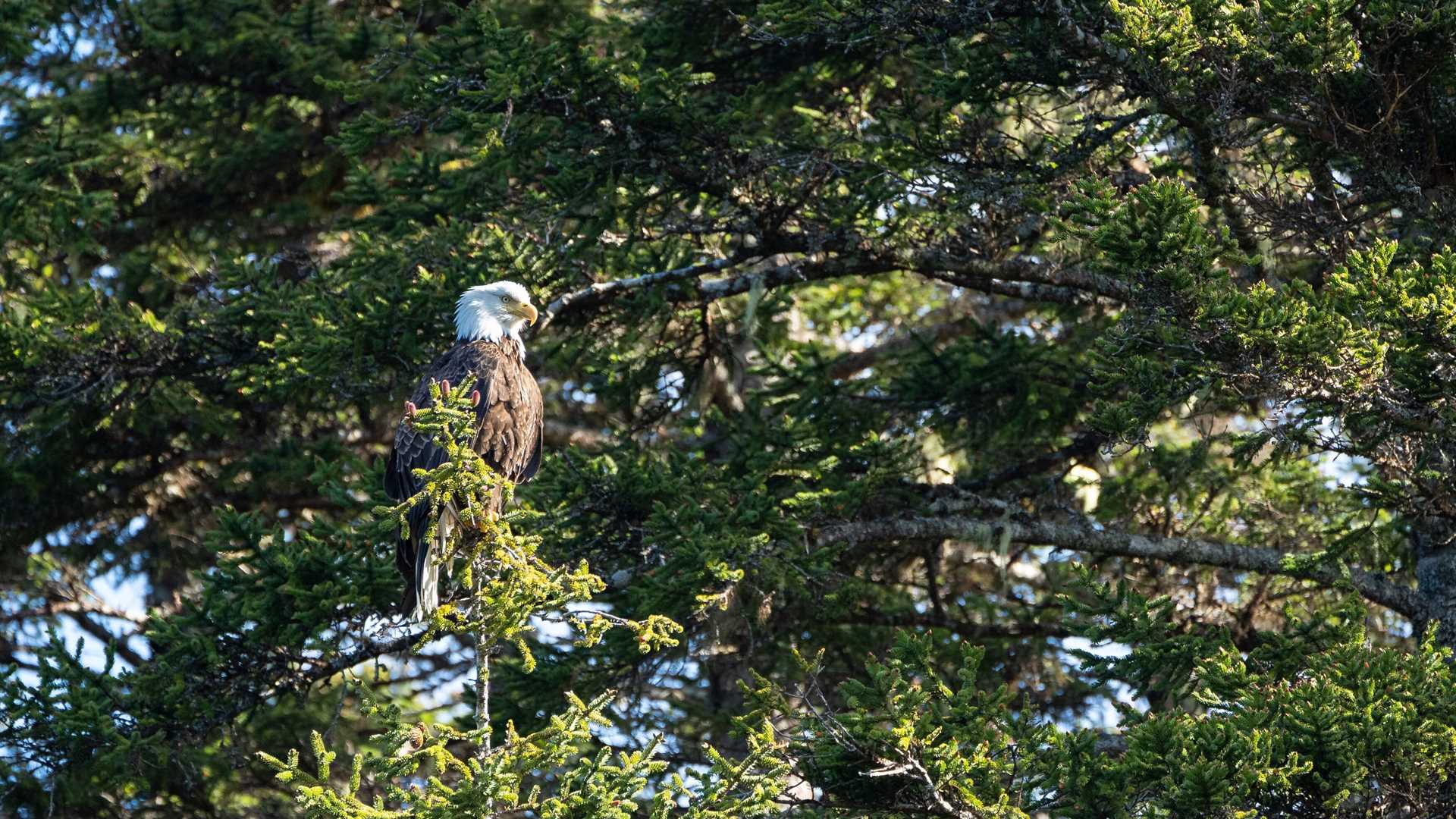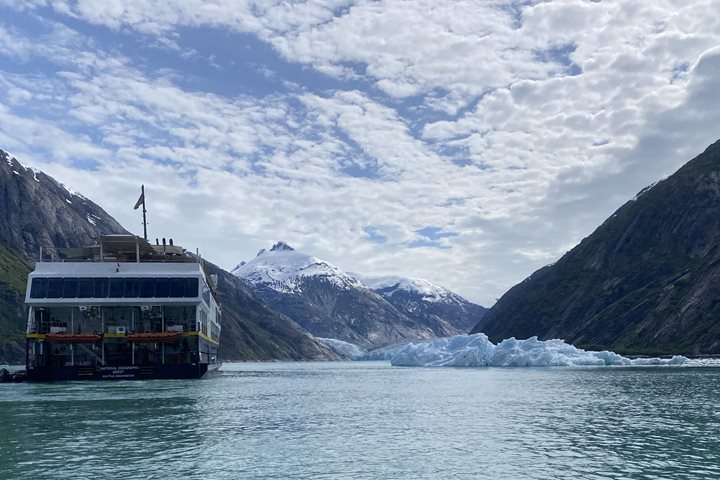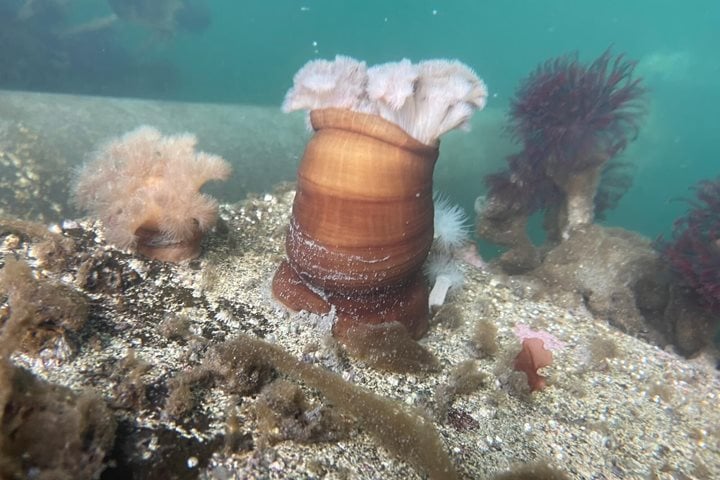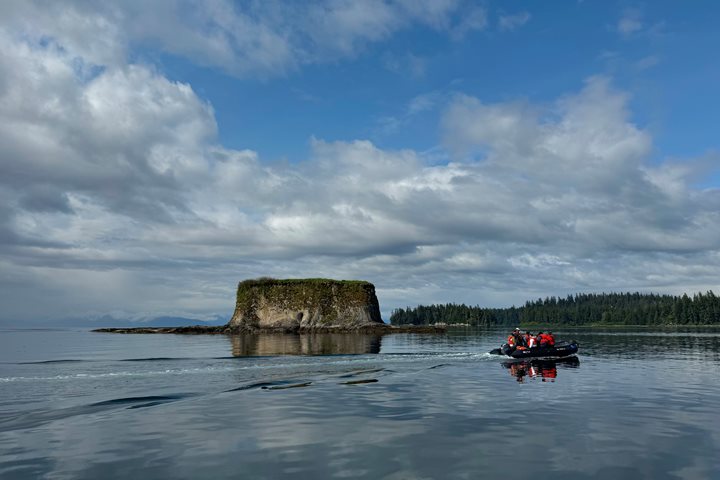Today we woke up to a stunningly beautiful day here in the Inian Islands. This is one of the expedition staff’s favorite locations, as this is where everything comes to feed. This happens because it’s the northernmost opening to the Pacific Ocean. As massive tidal surges occur, water is funneled through this narrow channel. As water is displaced on the surface, nutrient-rich waters are brought up from the ocean floor. This is a popular place to see eagles, sea otters, and Steller sea lions.
After a quick breakfast, we boarded our Zodiacs and headed out into the wildlife-rich waters. The day could not have been better, as we were treated to close encounters with all kinds of marine creatures. We were able to get up close and personal with tufted puffins, Steller sea lions, sea otters, and bald eagles. This truly was an unforgettable morning.
After a delicious lunch, we hopped back in our Zodiacs and headed to Fox Creek. This is an amazing location where evidence of bears was everywhere. We saw scat and bear prints along the beach before we walked into the forest, and then along the bear trails that spider web through the temperate rainforest. We also had an amazing opportunity to kayak in glass calm conditions and sail up to a salmon stream. All in all, this was a remarkable day and we can’t wait for what’s yet to come.







